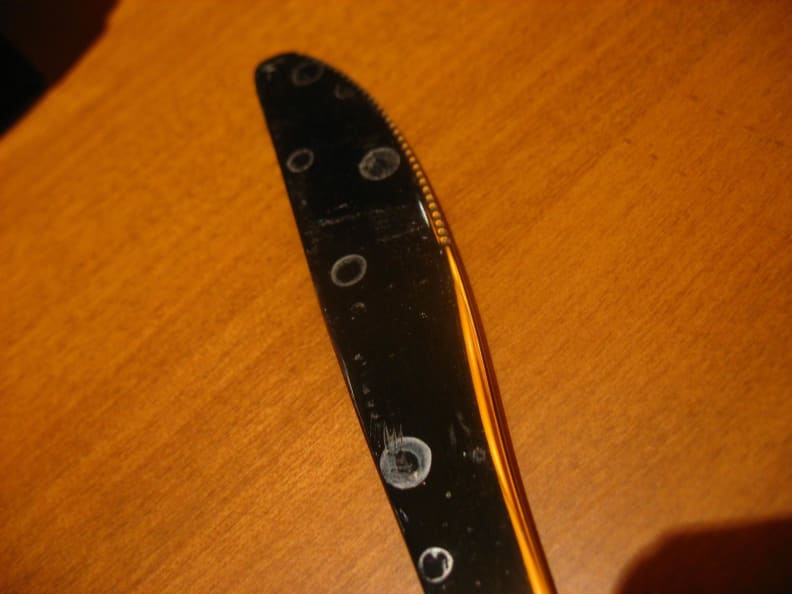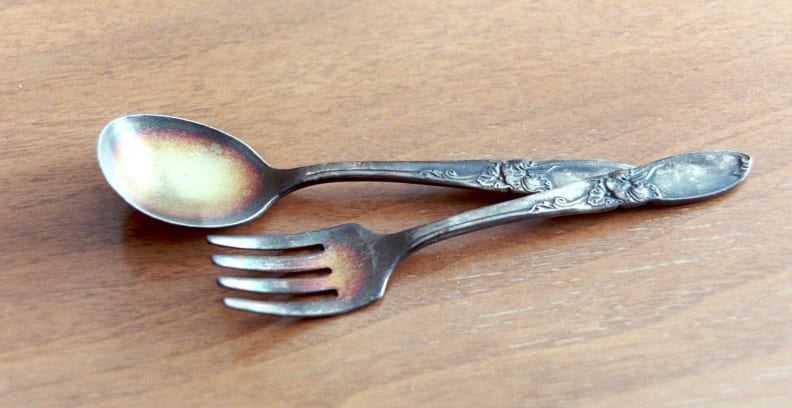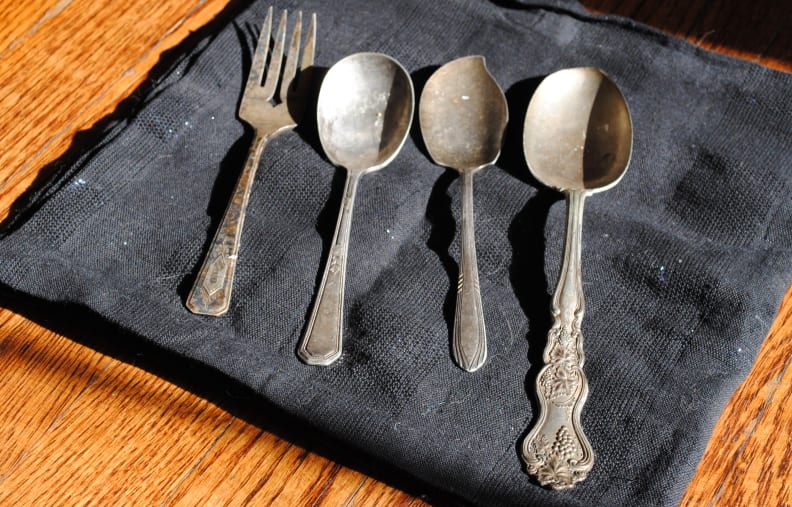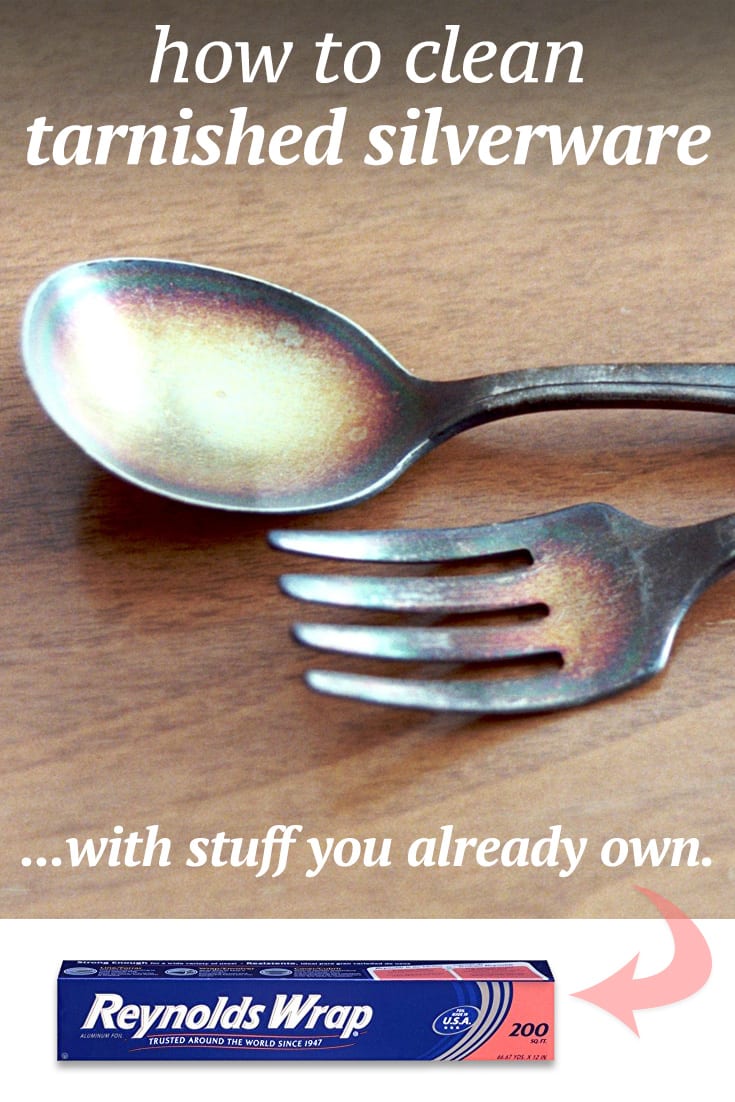How to clean your silverware in 3 easy steps
These easy methods will remove water deposits, tarnish, and rust.
 Credit:
GettyImages / shironosov
Credit:
GettyImages / shironosov
Recommendations are independently chosen by Reviewed's editors. Purchases made through the links below may earn us and our publishing partners a commission.
Nobody wants to use silverware that's covered in stains and spots, and don't even get us started on rust. There are things you can do to prevent buildup from getting on your silverware in the first place, but if you're already dealing with these issues, you're probably wondering what you can do to give your forks and knives their old shine.
There are multiple methods for cleaning your flatware, but we're going to focus on ways to clean up the three most common stains—water deposits, tarnish, and rust.

Removing Water Deposits
{{amazon name="Heinz White Vinegar, Plastic, 64 oz", asin="B00CJ8I01W", align="right"}} Perhaps the most common silverware stains come from water deposits. If you live in an area with hard water, your dishwasher is bound to leave these cloudy stains all over your utensils (not to mention your drinking glasses). There are several different theories on how you should go about removing water deposit, most of which involve using olive oil, vinegar, or both. We recommend you use both.
The recipe might sound familiar to home chefs, but no... you're not making salad dressing laced with calcium residue. According to SFGate, you'll want to put some olive oil on a cloth and rub out the stains. Then, use a cloth dabbed in vinegar to shine the silverware, which will make it look like new.
While some tutorials don't call for it, we recommend that you then rinse and dry off your silverware, unless you want it to smell like vinegar.

Removing Tarnish
Tarnish is a bit harder to remove than water deposits; you can't simply rub it off. You could try using a polishing compound, but many experts recommend a more DIY solution: soaking your silverware in a hot, saltwater bath with aluminum foil.
Delicious Days writes that you'll want to line a container with aluminum foil and spread your tarnished silverware out on top of it, making sure all utensils are touching the foil. Then add a tablespoon of salt and cover the silverware in boiling water.
{{amazon name="Reynolds Wrap Aluminum Foil (200 sq. ft.)", asin="B00UNT0Y2M", align="right"}} This creates a chemical reaction that will remove the tarnish. Let the silverware sit in the bowl for a few minutes, then rinse it while wiping off the tarnish with a cloth. Finally, dry the silverware.
Different outlets have different takes on this solution. Delicious Days says the tin foil bath works for real silverware. So does SFGate, but it also recommends adding in a tablespoon of vinegar. Meanwhile, The Washington Post adds that the solution works for stainless-steel silverware, but recommends adding baking soda in an equal amount to the salt.
You could probably try any variation without harming your silverware, so it might be best to try them all and see which method works best for you. However, this method isn't recommended if you're trying to clean bronze flatware.
For bronze flatware, eBay notes that you're going to need to use a bronze polish or a mixture of flour, vinegar, and salt. We recommend the homemade solution since you probably don't want to eat polish residue.
According to eBay, all you have to do is mix one cup of white vinegar with one teaspoon of salt and add enough flour to turn the mixture into a paste. You need to apply the paste to the bronze flatware and let it sit for up to an hour. Then, you can rinse off the paste and wipe it dry, which should leave you beautiful untarnished bronze.

Removing Rust
{{amazon name="Realemon 100% Lemon Juice (15 oz.)", asin="B007F1LWWC", align="right"}} There's only one thing worse than tarnished silverware: full-blown rusty silverware. If your silverware is covered in rust, sorry, it's probably not salvageable. But if you're dealing with just a few surface spots, there are a variety of techniques for removing them.
Perhaps the least caustic solution (you'll be putting these things in your mouth, after all) is one involving lemon juice. All you have to do is soak your silverware in the juice, and the citric acid should help loosen the rust. Then you can simply scrub off the rust spots.
If you want something a bit more potent, eHow recommends trying Bar Keepers Friend, which should help you scrub the orange specks right off.
Related Video
{{brightcove '4744713543001'}}




